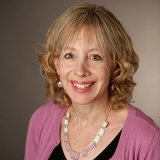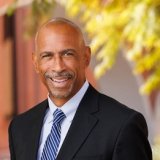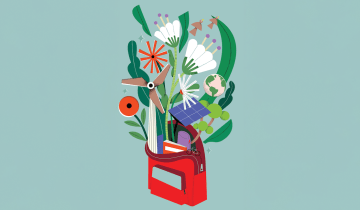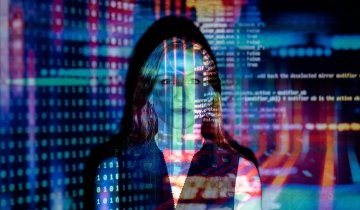We just returned from a week in Finland with students of USC Rossier’s Global Executive Doctor of Education program. The program equips leaders from around the world to improve education through innovative practices, smart policy decisions and mission-driven entrepreneurial solutions. As a USC Rossier program, the program’s signature aim is to advance educational equity. On this visit, we brought 22 impressive leaders with us to learn about the Finnish education system.
Over the course of six intensive days, we met together with senior educational leaders, policymakers and administrators. We listened and posed questions as we explored all levels of the Finnish education system from early childhood, through primary and secondary, to higher education and adult learning. Our daily itineraries included visits to schools and universities as well as education incubators and startup campuses. We held discussions with organizations, officials and scholars responsible for implementing and improving on the Finnish education model.
The objectives of our visit were multifold. By spending time looking at the Finnish education experience, we wanted to see what had made their success possible. In 2003, Finland was ranked #1 in the world in science and reading and second in math in Programme for International Student Assessment (PISA)1, while its tertiary system of education was ranked first by the World Economic Forum. Though it has slipped some since then, Finnish students continue to perform well above the Organisation for Economic Co-operation and Development (OECD) average. Through our visit we sought to gain insights into the nature of their success as well as what might be applicable for improving our own educational systems. We also aspired to further international discourse and thinking in education and participate in an exchange of knowledge, fully aware that all of our systems of education have laudable features as well as areas for growth. We were especially interested in the Finnish experience in light of its rapidly diversifying demographics, with rising refugee and immigrant populations.
What we found special
At the end of our visit, we spent time as a group discussing what we had learned. The following lessons emerged as being particularly salient:
- The child and equity are at the center of decision making. From the highest levels of government, to municipalities, to schools, to classrooms, there was a consistent message and focus on the dignity of humans, kids and teachers. This was evident in their emphasis on “solutions for the many, not the few” and on ensuring every student receives an education that prepares them for life. We learned that they were as surprised as anyone when the 2003 PISA results were published and they came in first, “We were just educating kids in the way we know,” placing equity as the key priority.
- The basis of education is child development. A consistent theme we found was a commitment to doing what is developmentally appropriate for kids. We saw this reflected in the design of schools and classrooms, in the curriculum and in the focus of research at the university.
- A trust-based system of education. They described this as trust-based accountability. A trust in schools and teachers and students allowed a focus on learning and reflection, not on accountability. A trust in teachers as experts in their fields and as esteemed professionals. As a result, teachers have autonomy in their classrooms and freedom to experiment. A trust in students to find and guide their own passions, and to have ownership of their school spaces. In this environment of trust, it is okay to say “I don’t know” and to fail. Some of our questions were met with, “I don’t know,” or “We are struggling there,” and “How can we together think about that?”
- A systemic focus on social-emotional learning and well-being. We saw this shared value in language, in the curriculum, and in school culture. Repeatedly we heard and experienced “wellbeing first, then learning” and “wellbeing = well learning.”
- Coherence of the system–from early childhood education through adult education. Early childhood education and adult education are very purposefully part of an integrated and coordinated system.
- Research-based practice and practice that influences future research. Teacher education is research-based and teachers are trained as researchers and continue to be consumers and producers of new knowledge in the field. Spaces at the university are purposefully designed for learning about practice. There is close collaboration between education entities, startup campuses and university research hubs to guide practice. We noted how often conversations and answers began with discussing the research that supported practices and how practices were influencing the focus of future research in a continuous learning cycle.
- Joy is seen as an essential element of learning. In libraries, classrooms and outdoor spaces, we saw evidence of joy in learning and kids who appeared happy to be in school.
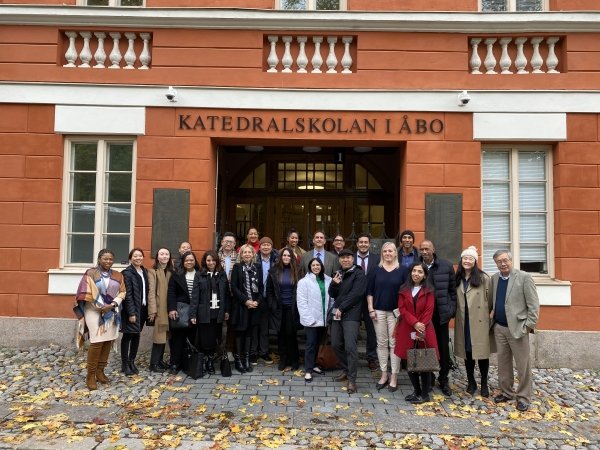
Questions we left with
Like most societies, Finland is in the midst of change, and change is producing some unexpected reactions. While only 4% of the population is immigrant, in 2022 nearly 50,000 new immigrants arrived in the country, and there was a 189% increase in refugees between 2021 and 2022 alone. As is true in many Western European countries (and the United States) the influx of new immigrants is producing political backlash. A few months ago, an anti-immigrant “True Finn” party received enough votes to win representation in the national government, despite its embrace of openly racist rhetoric.
With the influx of immigrants, new challenges are emerging in schools. Finland now has greater disparities between “native” Finnish children and immigrant children than any other nation in the OECD, and those disparities remain in second-generation immigrant students. While there are large variations in the proportion of immigrant populations across schools in Finland, we mainly visited schools with a small proportion of immigrant student populations. We collectively left wondering:
- How might a system like Finland’s equitably support a diversifying student population? We are curious how growing immigrant and refugee student populations’ needs will be met in the education system. What are their pathways to college and careers? What are the effects of the distribution of immigrant populations—some schools having a large percentage of immigrant/refugee student populations and others not—and other implications for growing segregation? Are schools with a large percentage of immigrant and refugee student populations provided with additional support to meet their needs? And, importantly, we want to know more about the implications of these developments for equity. We noted that the Finnish definition of equity may often be more akin to the concept of equality. Ultimately, we wondered how and if they will find a different path to avoid challenges other countries have faced regarding immigrant education, integration and honoring their own languages, cultures and histories.
- How will the rapid diversification of schools and society affect the culture of trust that underpins much of their success? What will the “culture of trust” look like, how durable is it and how will it endure? How will increased challenges in meeting more diverse needs influence the trust that exists at the core of the system?
- Finally, impressed by their commitment to research and innovation and the support systems they have created for new start-ups, we wondered: How can Finland create the conditions for the continued innovation and change they will need? To what extent do their current policies support the innovation-driven culture that spurred their educational success in the first place? What are other Nordic neighbors, such as Sweden and Estonia, doing to support an innovation culture and what impact is that having on those education systems? And, how does research support their innovation and experimentation in education, and how can we better incorporate research into the innovation cycle.
We arrived to Finland with big questions and we left with new ideas, new drive and fresh inspiration for the ongoing quest for deeper answers.
1 The Program for International Student Assessment (PISA) is an international assessment that measures 15-year-old students’ reading, mathematics and science literacy every three years.


